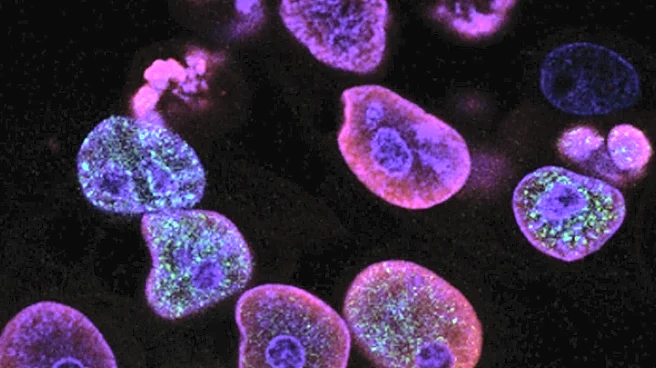What's Happening?
The Nobel Prize in Physiology or Medicine has been awarded to Mary Brunkow, Fred Ramsdell, and Shimon Sakaguchi for their pioneering work on regulatory T-cells (Tregs). Their research has significantly advanced the understanding of immune system function and peripheral immune tolerance, preventing autoimmune diseases. Sakaguchi's discovery of Tregs in 1995 challenged existing beliefs about immune tolerance, while Brunkow and Ramsdell's work in 2001 linked Tregs to the Foxp3 gene, associated with autoimmune diseases. These findings have led to numerous clinical trials exploring Treg cell therapies for autoimmune diseases and cancer.
Why It's Important?
The recognition of these scientists' work underscores the critical role of regulatory T-cells in immune system regulation and disease prevention. Their discoveries have opened new avenues for developing therapies targeting autoimmune diseases and cancer, potentially improving treatment outcomes and patient quality of life. The Nobel Prize highlights the importance of continued research in immunology, encouraging further exploration and innovation in the field. The award also brings attention to the potential of Treg cell therapies to transform medical treatment for various conditions.
What's Next?
With the Nobel Prize spotlighting Treg research, there may be increased investment and interest in developing therapies based on these findings. Pharmaceutical companies and research institutions are likely to accelerate clinical trials and explore new applications for Treg cell therapies. The award could also inspire collaboration between scientists and industry leaders to advance the development of innovative treatments. As research progresses, the medical community may see breakthroughs in managing autoimmune diseases and enhancing cancer treatment protocols.










